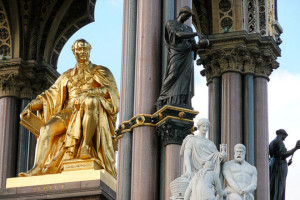 This post has kindly been written for us by the course tutor, Dr Lynne Walker
This post has kindly been written for us by the course tutor, Dr Lynne Walker
Historical researchers are often drawn to material and visual culture but can feel out of their comfort zone when confronted with archives which include images and ‘things’ rather than written and printed texts alone. This course was designed to overcome these difficulties and provide tools for the location, selection and interpretation of visual sources. Central to the course is the consideration of visual sources as evidence in historical practice, featuring diverse media from cartoons to political portraits, in still and moving images, in print and online. It suggests ways in which understanding visual sources can enhance the study of modern history by posing new questions and suggesting new answers to thorny research issues with material unavailable elsewhere. Staff and students consider together issues such as the importance of not using images merely as illustrations of previously concluded arguments, and the necessity of placing images in context and in relation to documentary sources and other images. This critical, comparative approach to visual sources offers insights and in Burke’s phrase, ‘helps historians think creatively about the past’. Representation is presented as a key concept for understanding visual sources and moves the discussion from the image itself to its reception and the position of the viewer in the making of meaning, its analysis and interpretation.
The course is built around lectures, seminar discussion and visits to archives, museums and libraries. Students have the opportunity to talk in detail to archivists, librarians and curators about their own research needs and find out more about how particular libraries, museums and other archives may be useful to them. These visits also help familiarise students with institutions where research material is deposited and we have found over the years that this has a positive, demystifying effect, which builds confidence and promotes productivity.
An Introduction to Visual Sources for Historians takes the form of full-day sessions held over the course of five weeks (the first three sessions are on Tuesdays; the final two on Mondays). The sessions will normally start with a lecture, followed by a seminar discussion. After lunch each week, the group will visit a gallery or institution of relevance to the week’s topic. Individual attention is a hall mark of the course.
